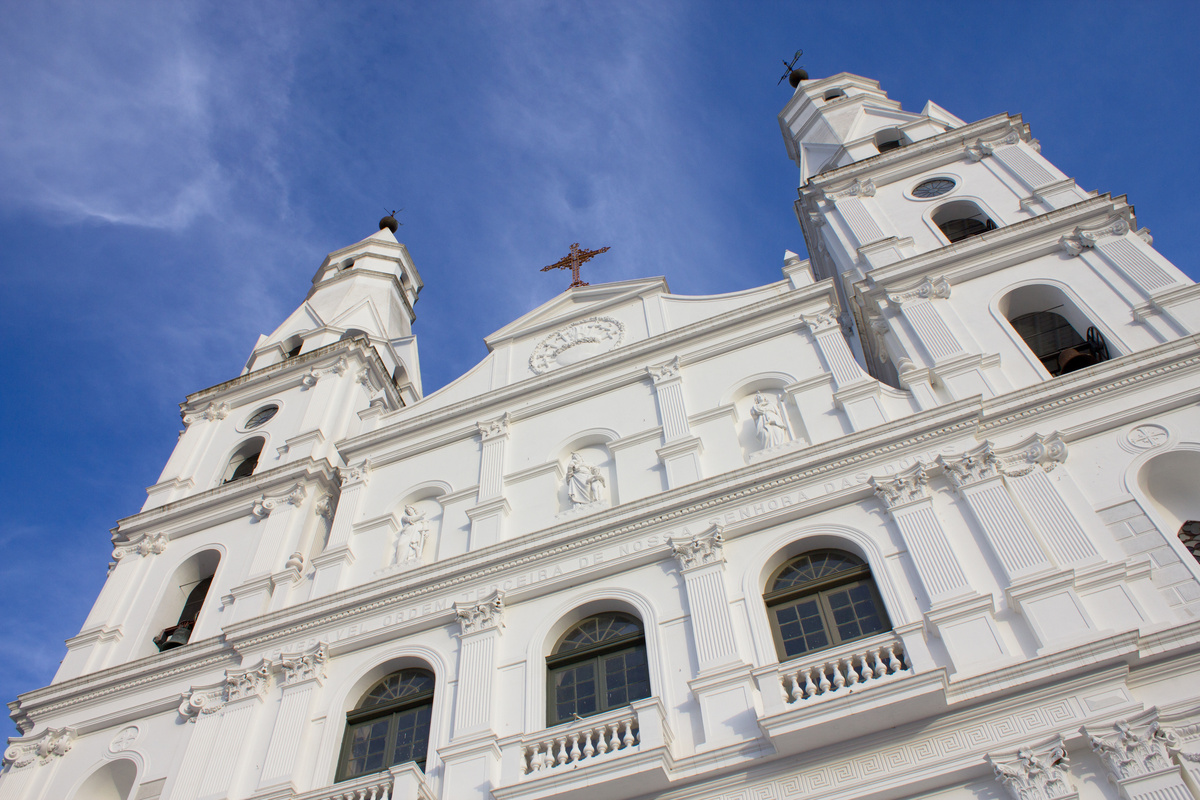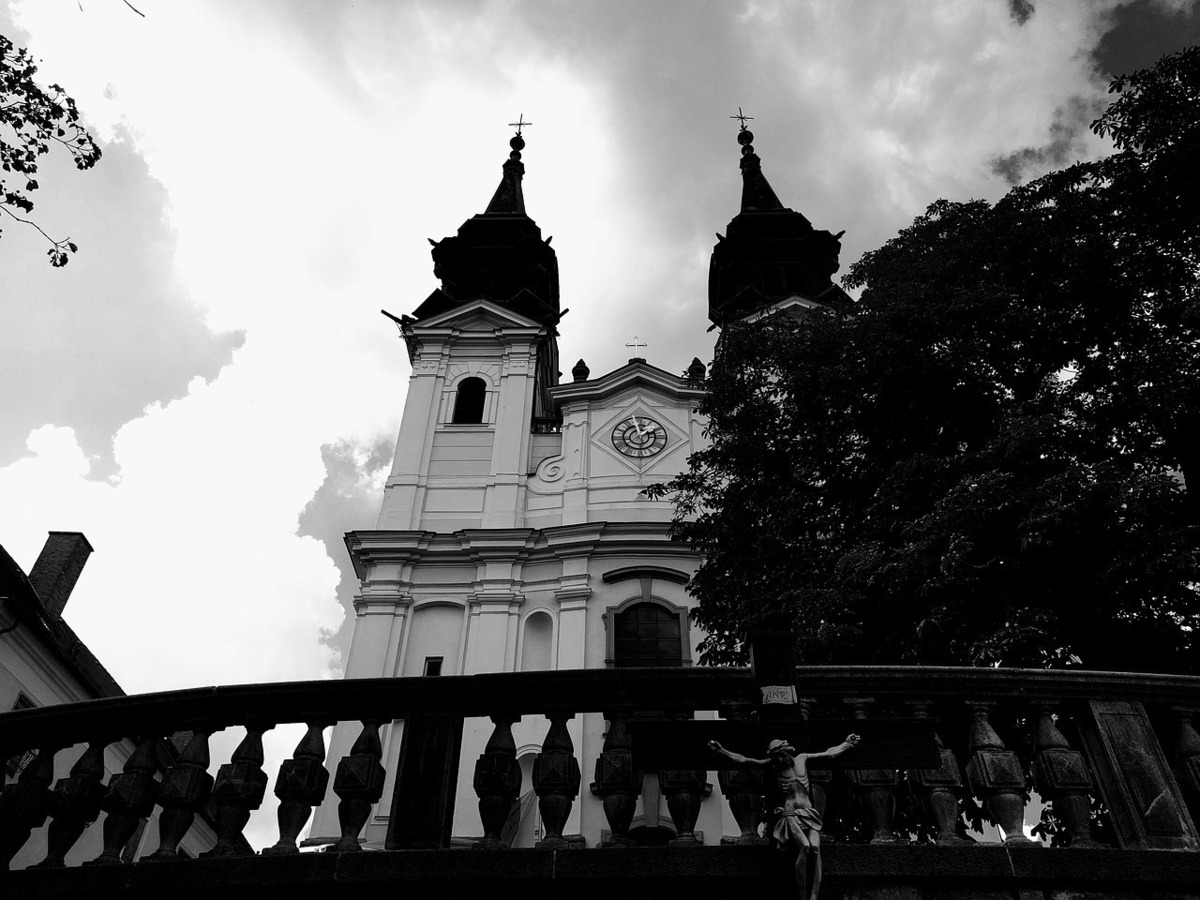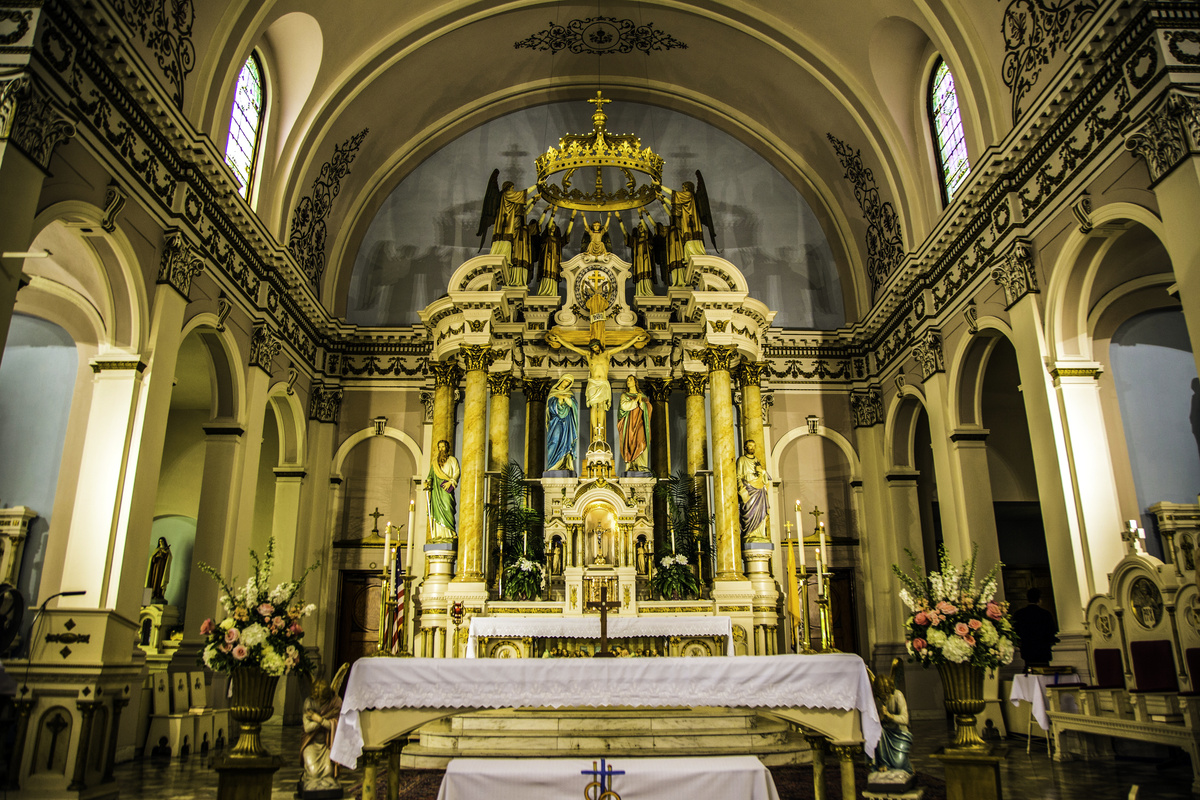Table of contents
What are the seven sorrows of Mary?

"The 7 Sorrows of Mary" is a devotion made by the faithful to Our Lady of Sorrows. The goal is to honor the suffering that Mary went through before the Cross, with Jesus Christ crucified. Thus, these stages of the devotion are reflective episodes that invite the faithful to meditate on Mary and her feelings, from the family's flight to Egypt, the Passion of Christ, through the Death to the Burial ofJesus.
In addition to honoring the suffering of the Mother of Christ, the 7 Sorrows of Mary also have the intention of giving strength to the faithful so that they can carry their own crosses. Thus, through the Crown of the 7 Sorrows, the faithful remember the pains that the Virgin went through on Earth with her Son, also seeking strength to overcome their daily adversities.
Our Lady of Sorrows still brings with her countless interesting and faith-filled stories. If you really want to understand more about her, keep following the text below.
Getting to know Nossa Senhora das Dores

Since the beginning of the stories involving the Catholic Church, there are reports of Mary's apparitions all over the world. In each place she visited, the Mother of Jesus appeared in a different way, always with the aim of revealing messages of faith for the salvation of humanity.
Therefore, Mary has many names, and one of them is Our Lady of Sorrows. This special name was given to the Virgin because of the sufferings that she went through during the Passion of Christ. Follow the reading below to understand everything about this saint that has faithful all over the world.
History
It is known among the faithful that Our Lady always kept everything in her heart. Thus, from the time she received the news that she would be the Mother of Jesus until her death on the cross, she never spoke loudly, cried out, or even tried to prevent the taking of her Son.
During the way to Calvary, Mother and Son met, and as much as Mary was ruined inside, full of pain for seeing her son like that, she did not externalize that feeling, and again kept it to herself.
Mary always adopted this attitude because she knew that from the time the angel Gabriel announced to her that she would beget the Son of God, she knew it would not be easy and she would face many challenges. Later, as she contemplated her Son standing on the cross beside John, one of Jesus' beloved disciples, Christ uttered the following words: "Son, here is your mother; Mother, here is your son.
Thus, by giving each other, Jesus also gave his Mother to all humanity, and the faithful welcomed her as their Mother. In this way, it is understood that when they met on this journey and exchanged glances, both Jesus and Mary understood each other's mission there. Despite the difficulty, Mary never despaired and accepted her destiny. For the faithful, Mary is the Mother from heaven who continues to intercede foryour children on Earth, with much love and compassion.
Although the pain of losing a Son is incalculable, Mary went through all this suffering leaving the lesson that you must be wise and have discernment to understand the will of God. All these episodes involving the Passion of Christ made Mary receive another name, and this time she was called Our Lady of Sorrows or Sorrowful Mother.
Visual characteristics
The image of Our Lady of Sorrows carries the semblance of a sad and afflicted Mother before all the suffering of a Son. Her garments show the white color, which represents virginity and purity, and also carries the red, because at that time Jewish women used this tone to symbolize that they were mothers. In some images, she also appears with a garment in a light purple tone.
Her veil, as usual, is blue, representing heaven, which means that this is where she is, with God. In some images, Mary also appears with a shade of gold under her veil. In this case, it represents a kind of royalty, thus demonstrating that she is Queen, as well as Mother and Virgin.
In her hands, Our Lady of Sorrows holds a crown of thorns, like the one used by Jesus on the cross, and some nails, components that portray all her suffering. Another very interesting detail in the image is in the heart of the Virgin, which appears being wounded by seven swords, reflecting even more her internal pain and all her suffering. The number of swords also indicates quantityof Mary's sorrows.
Our Lady of Sorrows in the Bible
Within the Holy Bible, all these pains appear described, bringing many reflections to the faithful: from the first, entitled "The prophecy of Simeon", which talks about the spears that would go through the heart of the Virgin - thus portraying that she would go through great periods of turbulence - to the last pain, in which Mary observes the body of her Son in the Holy Sepulcher, with her heart full ofsuffering.
You will learn more about the 7 Sorrows of Mary a little later in this article. The fact is that the Holy Bible portrays all these episodes in a very detailed way. In the Catholic Church, the image of Our Lady of Sorrows is still represented by the swords wounding the immaculate heart of Mary.
What does Our Lady of the Seven Sorrows represent?
The image of Our Lady of Sorrows appears with her holding a crown of thorns and some nails, symbolizing the entire episode of the Passion of Christ, thus representing the incalculable suffering that Mary lived. Mary was very discreet and kept all her feelings to herself. Thus, during the entire Passion of Christ, one can observe a Mother afflicted and immensely sad, with her heartbroken.
Mary did not scream, become hysterical, or anything like that. Thus, she suffered in silence, accepting her destiny and that of her Son. In view of these facts, it can be interpreted that Our Lady of Sorrows represents for the faithful that one must be calm, patient and discerning when facing life's difficulties, besides showing the need to understand and accept the Divine plans.
Veneration in other countries
Called in Latin as Beata Maria Virgo Perdolens or Mater Dolorosa, Our Lady of Sorrows is worshiped throughout the world. According to some scholars, devotion to her began in mid 1221, in Germania, in the Monastery of Schonau.
A short time later, in 1239, she also began to receive honors and devotions in Florence, Italy. However, it does not stop there, Our Lady of Sorrows is still worshipped in more places, such as Slovakia, for example, where she is the patroness, as well as in the U.S. state of Mississippi.
Our Lady of Sorrows also has countless faithful in some Italian communes, such as Accumoli, Mola di Bari, Paroldo and Vilanova Modovi, as well as receiving special celebrations in Malta in Spain. In Portugal, she is also patroness of several different places.
Veneration in Brazil
In Brazil, Our Lady of Sorrows has countless faithful from North to South of the country. Proof of this is that she is the patron saint of many different cities, and there are many festivals in her honor.
In Heliodora/MG and Cristina, also in Minas Gerais, for example, the "Setenário das Dores de Maria" is celebrated, in which 7 Masses are held with the theme of the Seven Sorrows of the Virgin. The celebration begins on the fifth Sunday of Lent with the 1st Sorrow and ends on Saturday (the day before Palm Sunday) with the 7th Sorrow.
She is also the patron saint of cities in the states of Rio de Janeiro, Minas Gerais, Bahia, São Paulo, Piauí, and many others. In Teresina, Piauí, for example, on September 15, day of Nossa Senhora das Dores, a celebration with procession is held in her honor. The procession leaves the Church of Nossa Senhora do Amparo, accompanied by countless faithful, and goes to the Cathedral.
Curiosities about Our Lady of Piety
One of the curiosities is precisely in the name of this subtitle. You may have found it strange to be written, "Nossa Senhora da Piedade", but one of the biggest curiosities about it is the way it is known in different places.
With countless names throughout Brazil, some of the ways that Our Lady of Sorrows is known are: Our Lady of Pity, Our Lady of Anguish, Our Lady of Tears, Our Lady of Seven Sorrows, Our Lady of Calvary, Our Lady of Mount Calvary, Sovereign Mother and Our Lady of Sorrow.
As such, all of these names refer to the same Saint, and you may call upon her or call upon her in whatever way you prefer.
The 7 pains of Mary

According to the teachings of the Catholic Church, all the sufferings that Mary went through in life made her a great intercessor before God for the requests of her children on earth.
In this way, Our Lady of Sorrows symbolizes all the sufferings of the Virgin Mary: from the Prophecy of Simeon about Christ, through the disappearance of the Child Jesus as a child, until arriving at the death of Christ. Follow below all the 7 Sorrows of Mary.
Simeon's prophecy about Jesus
Simeon's prophecy was certainly harsh, yet Mary received it in faith. In the situation at hand, the prophet said that a sword of sorrow would pierce her heart and soul. The prophecy was made while Jesus, still a baby, was being presented in the Temple.
Simeon blessed Mother and Son and said: "Behold, this child is destined to be the occasion of the fall and rise of many in Israel and a sign of contradiction. As for you, a sword will pierce your soul" (Lk 2:34-35).
The flight of the Holy Family to Egypt
After receiving the prophecy from Simeon, the Holy Family tried to flee to Egypt, because Emperor Herod was looking for the child Jesus in order to kill him. As a result, Jesus, Mary and Joseph stayed in foreign lands for a period of 4 years.
The Angel of the Lord appeared to Joseph in a dream and said: "Arise, take the child and his mother, and flee into Egypt, and stay there until I tell you; for Herod will seek the child to kill him. Arising, Joseph took the child and his mother and departed into Egypt" (Mt 2:13-14).
The disappearance of the Child Jesus for three days
As soon as they returned from Egypt, the Holy Family went to Jerusalem to celebrate the Passover. At that time, Jesus was only 12 years old and ended up getting lost from Mary and Joseph. The fact in question occurred because when his parents returned from Jerusalem, the Messiah stayed in the Temple arguing with the so-called Doctors of the Law.
However, his parents thought he was in the caravan along with the other children. Noticing Jesus was missing, Mary and Joseph returned distressed to Jerusalem and only found Jesus after 3 days of searching. Once they found the Messiah, Jesus told them that he "should take care of his Father's things."
"When the days of the feast of the Passover were ended, on their return, the child Jesus remained in Jerusalem, unnoticed by his parents. Thinking that he was in the caravan, they went a day's journey and sought him among relatives and acquaintances; and when they did not find him, they returned to Jerusalem seeking him" (Lk 2:43-45).
The encounter of Mary and Jesus on the way to Calvary
After being condemned as an outlaw, Jesus walked the road to Calvary, carrying the cross on which he was to be crucified. During this journey, Mary, with her heart full of pain, met her Son.
"As they led Jesus away, they laid hold of a certain Simon of Cyrene, who was coming in from the country, and appointed him to carry the cross after Jesus; and a great multitude of people and women followed him, beating their breasts and lamenting him" (Lk 23:26-27).
Mary observing the suffering and death of Jesus on the Cross
Seeing her Son crucified was surely another very painful situation for Mary. According to some Catholic scholars, during the act of crucifixion, each nail pierced into Jesus was also felt by Mary.
"Standing by the cross of Jesus were his Mother, his Mother's sister, Mary of Cleophas, and Mary Magdalene. Seeing his Mother and, standing near her, the disciple whom he loved, Jesus said to his Mother: Woman, behold, your son! Then he said to the disciple: Behold, your Mother!" (Jn 19:15-27a).
Mary receives the body of her son taken from the Cross
The sixth sorrow of Mary Most Holy is marked by the moment when Jesus is taken down from the cross. After the Lord's death, his disciples Joseph and Nicodemus took him down from the cross and placed him in his Mother's arms. Upon receiving her Son, Mary pressed him against her breast and observed all the damage that sinners had done to that holy body.
Distressed, Mary removed the crown of thorns from Jesus' head, observed his hands and feet, and said:
"Ah, my Son, to what state has love for men reduced thee; what evil hast thou done to them that they should thus mistreat thee? Ah, my Son, see how I am afflicted, look upon me and comfort me, but thou seest me no more. Speak, say a word to me and comfort me, but thou speakest no more, for thou art dead. O cruel thorns, atrocious nails, barbarous spear, how couldst thou thus torment thy Creator? What thorns, what nails.Ah, sinners."
"When evening came, because it was the Preparation Day, that is, the day before the Sabbath, Joseph of Arimathea came and entered Pilate's house decidedly and asked for the Body of Jesus. Pilate then gave the corpse to Joseph, who took the Body down from the cross" (Mk 15:42).
Mary watches the body of her son being laid in the Holy Sepulcher
The last of Mary's 7 sorrows is marked by the burial of Jesus, when Mary observed the sacred body of her Son as it was placed in the Holy Sepulcher. The tomb in question was lent by Joseph of Arimathea.
"The disciples took the Body of Jesus and wrapped it in linen cloths with spices, as is the burial custom of the Jews. There was near the place where he had been crucified a garden, and in the garden a new tomb where no one had yet been laid. It was there that they laid Jesus" (Jn 19:40-42a).
Prayer of the seven sorrows of Mary

When receiving the mission to be the Mother of the Messiah and great Savior, Mary ended up having her life marked by numerous trials. The 7 pains of the Virgin are narrated in the Bible, and by following, it is possible to understand how Mary suffered in love for her Son.
Because of this, the prayers related to the 7 pains of Mary are extremely powerful and can come to help the afflicted hearts that are going through certain problems. See below.
How does Rosario das Sete Dores work?
Also known as the Crown of the Seven Roses, this Rosary has been very traditional in the Catholic Church since the Middle Ages. After the apparitions of Mary in Kibeho, in the year 1981, it became even better known, because Our Lady asked that the Rosary of the Seven Sorrows be introduced again throughout the world.
The Rosary of the 7 Roses begins with the Sign of the Cross, is followed by an introductory prayer and an act of contrition, and three Hail Marys are prayed. Then the Rosary begins with its 7 mysteries, which represent the 7 sorrows of the Blessed Virgin. Each mystery is composed of meditation and prayer, and at the end of each mystery an Our Father and seven Hail Marys are prayed.
At the end of the seven mysteries, the "jaculatory" and the final prayer are recited. After this, the jaculatory is recited three more times and the Rosary is closed with the Sign of the Cross.
When to pray?
The prayers to Our Lady of Sorrows promise to end the afflictions of the faithful and put an end to their sufferings. Thus, you can turn to her whenever you are going through a troubled situation in your life. It can be in relation to a health problem, financial, professional or many others.
It is known that one should not measure problems or pain. Therefore, regardless of the reason that is leaving you distressed and sad, have faith that the powerful prayers of the Seven Sorrows can help you, calm down and end your suffering.
Opening Prayer of the 7 Sorrows of Mary
It begins with the Sign of the Cross: in the name of the Father and of the Son and of the Holy Spirit. Amen.
Introductory Prayer: "O God and my Lord, I offer You this Rosary for Your glory, that it may serve to honor Your Holy Mother, the Virgin Mary, and that I may share and meditate upon Her sufferings.
I humbly ask you: grant me true repentance for my sins and give me the wisdom and humility necessary for me to receive all the indulgences granted by these prayers."
Final Prayer of the Seven Sorrows of Mary
Closing Prayer: "O Queen of Martyrs, your heart has suffered much. I implore you by the merit of the tears you have wept during these sad and terrible times, that you grant to me and all the sinners of the world the grace to repent sincerely and truly. Amen".
Three times is prayed the aspiration: "O Mary, who was conceived without sin and suffered for us all, pray for us".
The Rosary is concluded with the Sign of the Cross: In the name of the Father, and of the Son, and of the Holy Spirit. Amen.
How can the prayer of the 7 Sorrows of Mary help in your life?

A prayer, in a general way, can help you at any moment of your life. Thus, all around the world countless faithful turn to heaven with the most diverse requests for intercession, be it a grace for health, employment, problem solving or other things.
Knowing this and also all the power that exists in the prayers of the 7 Pains, understand that regardless of the problem in which you are going, if you have faith, these prayers can help you.
Also keep in mind that the word "help" does not mean that you will completely get what you ask for, because, according to the catholic faith, not always what we wish or ask for is the best for us, at least at that moment. So, as God knows everything, he ends up guiding you to the best path, and many times you will only understand the reason for that afterwards.
In this case, the word "help" also enters your life through the prayers to calm you down, remove the afflictions from your heart and help you to understand the Divine plans. Therefore, even if your request is not answered, remember Our Lady of Sorrows, who suffered in silence when seeing the situation of her Son and only understood the Divine will and surrendered and trusted in God's plans.
However, despite this, still understand that you must do your part, that is, pray with faith, asking for the intercession of Our Lady of Sorrows, who is also a Mother, and therefore tends to understand her children and take their requests to the Father. Ask with faith and trust that the best for your way, or of those around you, will be done.

